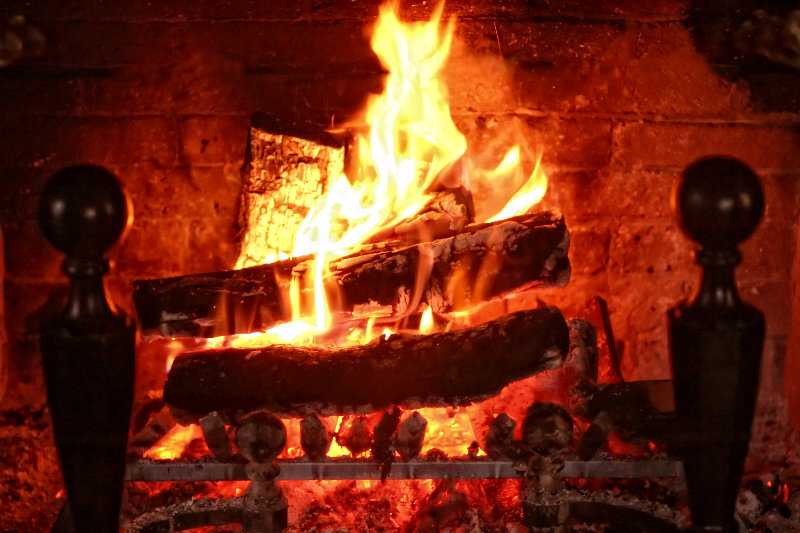January 24, 2012


Those of us with fireplaces and wood stoves have been basking in the glowing embers and brilliant red, orange, and yellow flames of burning wood and pellets. All that comfort and joy can come to a tragic end though if your chimney has not been properly cleaned of creosote, soot, and other residues. Hot smoke can ignite these materials inside the chimney. Also, toxic smoke and carbon monoxide, which is undetectable to humans, can enter your home. (Photo by Kgreggain, Stock.Xchng)
[nggallery id=101 template=carousel images=4][imagebrowser id=101]
By Mike Brandolino
We are well into winter and boy, is it cold! Those of us with fireplaces and wood stoves have been basking in the glowing embers and brilliant red, orange, and yellow flames of burning wood and pellets. The aroma of burning wood brings a bit of comfort on a cold night.
All this comfort and joy can come to a tragic end though if your chimney has not been properly cleaned of creosote, soot, and other residues. Hot smoke can ignite these materials inside the chimney. Also, toxic smoke and carbon monoxide, which is undetectable to humans, can enter your home.
Thousands of years ago, humans learned how to control and manage a fire for cooking, light, and warmth. Fire is a primitive tool, maybe even an art form, which modern humans still rely on for the same reasons. Sierra Club Green Home has compiled some fireplace safety info, so you can bask in that warmth worry-free.
Is it Safe to Start a Fire?
Before you burn another log, ask yourself when was the chimney was last cleaned. If you don’t remember when the chimney was cleaned, it is probably not safe to start a fire. Find a professional chimney sweep, for everyone’s safety.
Also, remember to never store flammable materials near the furnace, boiler, fireplace, or wood stove. Always store the logs in a safe location away from the fire.
Get Your Chimney Inspected
The Chimney Safety Institute of America recommends that you have your chimney inspected and cleaned in order to:
Chimney inspections are part of home fire safety procedures.
Chimney Caps
Is your chimney capped? Is the cap in good condition? Why would you need a chimney cap for fireplace safety, anyway?
A chimney online casino canada cap helps to reduce or prevent cold air and precipitation from entering through the fireplace exhaust shaft. It also helps prevent critter encounters.
The top of the chimney, where the warm exhaust and smoke exits, is a favored place for birds and other wildlife to gather. The heat provides them with a temporary respite from the frigid temperatures. On rare occasions, a somewhat careless or curious animal can fall into the chimney shaft. The animal can clog the shaft, fall into the fire below, or run amok indoors.
Smoke Alarms and Carbon Monoxide Detectors
You should have several smoke alarms and carbon monoxide detectors throughout the house. One of each should be in the room with the fireplace or wood stove. If you have more than one fireplace in your house, you will need a smoke alarm and a carbon monoxide detector in each rooms where there is a fireplace.
Fire Extinguisher
You should always have a fire extinguisher nearby, and all adults and older youths must know how to properly operate a fire extinguisher. Follow the manufacturer’s instructions. Consider purchasing a few extra fire extinguishers to practice using them in your yard or open space outside.
You can also contact your local fire department for fire extinguisher training, and to learn fire safety procedures in and around the house.
Furnaces and Boilers
Is your home heating system in good working order and functioning properly? If not, you should have it inspected by a heating, ventilation, and air conditioning (HVAC) professional immediately.
One simple thing you as a home owner can do to improve the efficiency of your furnace is to replace the air filter. It usually only takes a couple of minutes to remove the old dirty filter and insert a new, clean air filter. When the furnace air filter is dirty, the system is not operating at peak efficiency, and you are spending more money than necessary on home heating costs.
This article is for informative purposes only. Always contact professional heating, ventilation, and air conditioning (HVAC) and chimney sweeps for inspections and specific advice on your fireplace safety. Your local fire department can provide you with additional home fire safety information.
For related article see:
Keep Your Fireplace Burning Efficiently
© 2012 SCGH, LLC.
]]>